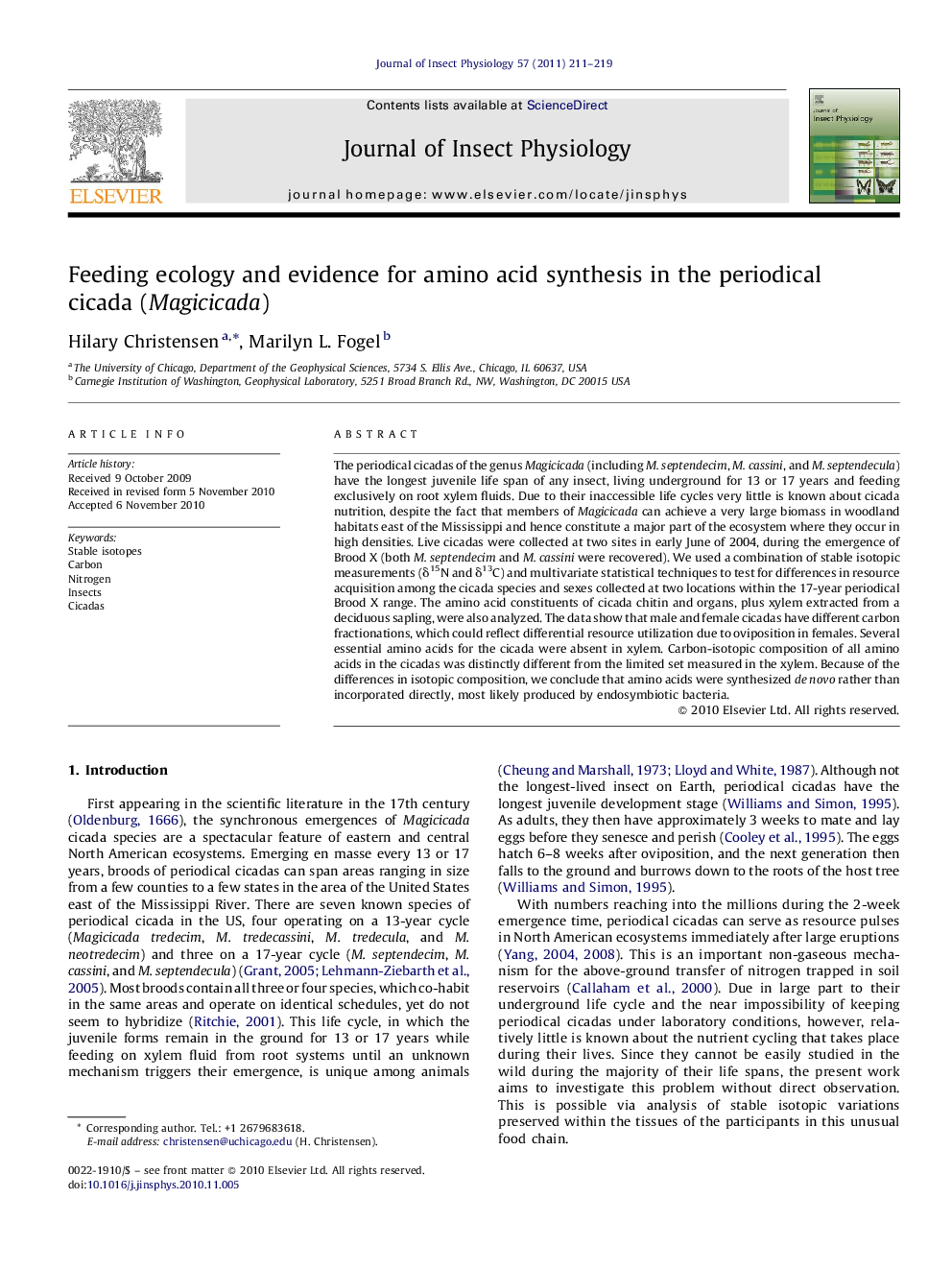| Article ID | Journal | Published Year | Pages | File Type |
|---|---|---|---|---|
| 2840982 | Journal of Insect Physiology | 2011 | 9 Pages |
The periodical cicadas of the genus Magicicada (including M. septendecim, M. cassini, and M. septendecula) have the longest juvenile life span of any insect, living underground for 13 or 17 years and feeding exclusively on root xylem fluids. Due to their inaccessible life cycles very little is known about cicada nutrition, despite the fact that members of Magicicada can achieve a very large biomass in woodland habitats east of the Mississippi and hence constitute a major part of the ecosystem where they occur in high densities. Live cicadas were collected at two sites in early June of 2004, during the emergence of Brood X (both M. septendecim and M. cassini were recovered). We used a combination of stable isotopic measurements (δ15N and δ13C) and multivariate statistical techniques to test for differences in resource acquisition among the cicada species and sexes collected at two locations within the 17-year periodical Brood X range. The amino acid constituents of cicada chitin and organs, plus xylem extracted from a deciduous sapling, were also analyzed. The data show that male and female cicadas have different carbon fractionations, which could reflect differential resource utilization due to oviposition in females. Several essential amino acids for the cicada were absent in xylem. Carbon-isotopic composition of all amino acids in the cicadas was distinctly different from the limited set measured in the xylem. Because of the differences in isotopic composition, we conclude that amino acids were synthesized de novo rather than incorporated directly, most likely produced by endosymbiotic bacteria.
Graphical abstractFigure optionsDownload full-size imageDownload as PowerPoint slideResearch highlights▶ Endosymbiotic bacteria are present in periodical cicadas (genus Magicicada). ▶ These bacteria synthesize essential amino acids de novo in cicadas. ▶ Male and female cicadas exhibit different ranges of δ15N and δ13C, more than likely attributable to oviposition. ▶ Stable isotope analysis is a viable tool for studying the ecology of organisms with inaccessible lifestyles.
